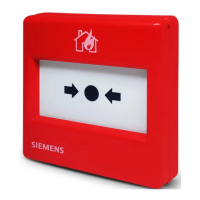14
fMRI User Guide
4.6 Synchronization
Usually, EPI data acquisition consists of multiple 2D slices, which are referred to as a volume or measurement.
Each volume is acquired in 1 TR, and the data acquisition of a volume is repeated for the number of
measurements specified. In a typical fMRI experiment, a stimulus may be presented for “x” measurements,
then the stimulus may be switched OFF for the next “x” measurements, and ON again for the next set of “x”
measurements, and so on. fMRI data analysis then tracks signal change in a voxel over time and correlates signal
change to the stimulus presented, as a function of time. If signal change is found to be synchronous with stimulus
change, then we say that we have a BOLD response (Figure 5).
Figure 5. Stimulus presented during an fMRI experiment (a) and how signal changes in a voxel are compared
(b,c). In trace (b), the signal changes in the voxel correlate well with the stimulus presented, and we have a
“synchronous” BOLD response. In trace (c), the signal change in a voxel is not correlated with the stimulus
presented, and the signal may change due to factors other than the stimulus.
A critical aspect of the above evaluation is the knowledge of when our stimulus was presented with respect to
the EPI data acquisition, in order to align the starting time points of both traces – the stimulus and the voxel
signal change. To be able to correlate brain activity with stimuli, it is important that all events – stimuli, subject
response, and physiological measurements – be synchronized.
Baseline
x meas x meas x meas x meas x meas
(a.)
(b.)
(c.)
Active
Stimulus
Asynchronous
response
Synchronous BOLD
response

